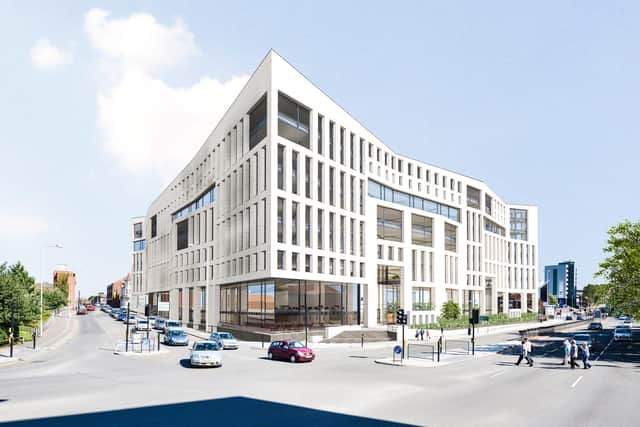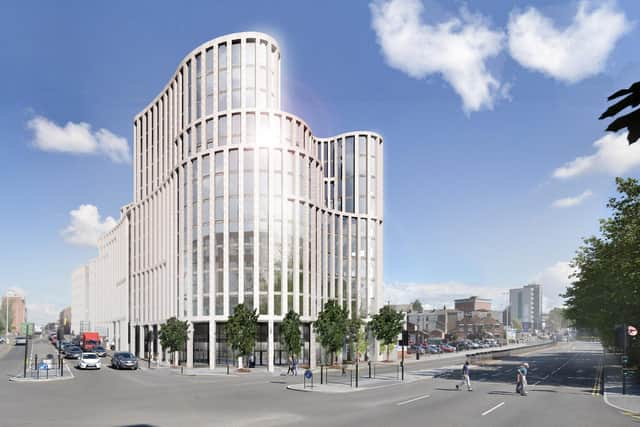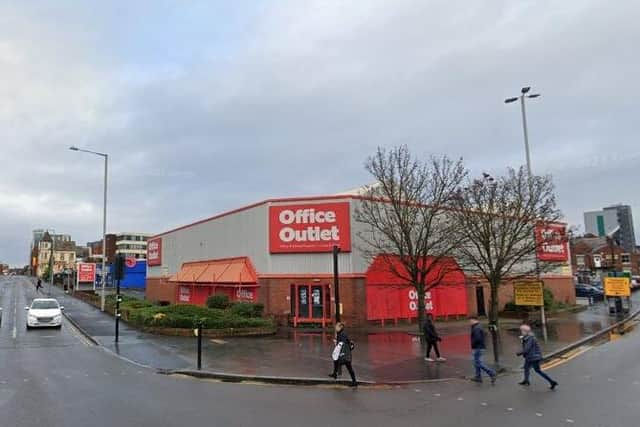The 'forgotten' office block planned for Preston which will probably never appear
and live on Freeview channel 276
Plans for the “Altus” scheme first came to light in the summer of 2017, when the striking structure was touted as a “game-changer” that would bring 3,000 jobs to the city.
The eight-storey structure was set to spring up on the corner of Corporation Street and Ringway on land occupied by the now closed Office Outlet store and the Hill Street car park.
Advertisement
Hide AdAdvertisement
Hide AdThe Lancashire Post understands that it underwent a redesign two years later when it became apparent that the car park land was not going to become available and that the building would have to be wholly contained on the retail site.


The original angular blueprint for the building was modified and took on a striking curved look, which Preston-based David Cox Architects said gave it a more “fluid” appearance.
The 345,000 square foot space was intended to have the option of retail and leisure facilities at ground floor level.
However, the proposal never made it to the planning application stage and David Cox has told the Post that if and when plans are submitted for the site, he does not believe that they will be based on the Altus design.
Advertisement
Hide AdAdvertisement
Hide Ad

“A significant opportunity existed a few years ago when central government were actively looking to re-site [Whitehall] departments in core cities.
“Preston badly needs some grade-A office space which would attract some more major employers to the city to boost its city living, leisure and retail offering,” Mr. Cox said.
Back in August, an ambitious vision was unveiled for the area around Preston railway station which would see just that sort of accommodation brought into the city.
At the time, Preston City Council’s cabinet member for planning and regulation, David Borrow, said that the so-called Preston Station Quarter Regeneration Framework was “aspirational” and could help put developers and the authority’s planners “on the same page” about what should be built and where.
Advertisement
Hide AdAdvertisement
Hide Ad

The long-term plan included proposals for what it termed “University Walk” – the Corporation Street corridor between Fishergate and UCLan, which includes the prominent plot on which Altus had been proposed.
The framework document assessed the area as having “poor quality buildings and public realm, combined with vacant sites” which were considered to be “undermining the route between the city centre and university campus”.
It suggested the creation of new buildings that could provide university accommodation and workspaces, retail opportunities and the comprehensive redevelopment of the area between Fishergate and Heatley Street to create a “seamless, high-quality urban environment that forms a strong relationship between the station and UCLan”.
Mr. Cox said that his firm always designs buildings for specific sites – so if Altus does not materialise in its intended location it would not be relocated wholesale elsewhere in the city. However, he said that “some of the ideas” associated with it might nevertheless be used on other projects.
When Altus was first mooted, it was suggested that it could help Preston rival the likes of Manchester and Warrington for office space by tempting tenants with lower rents.
